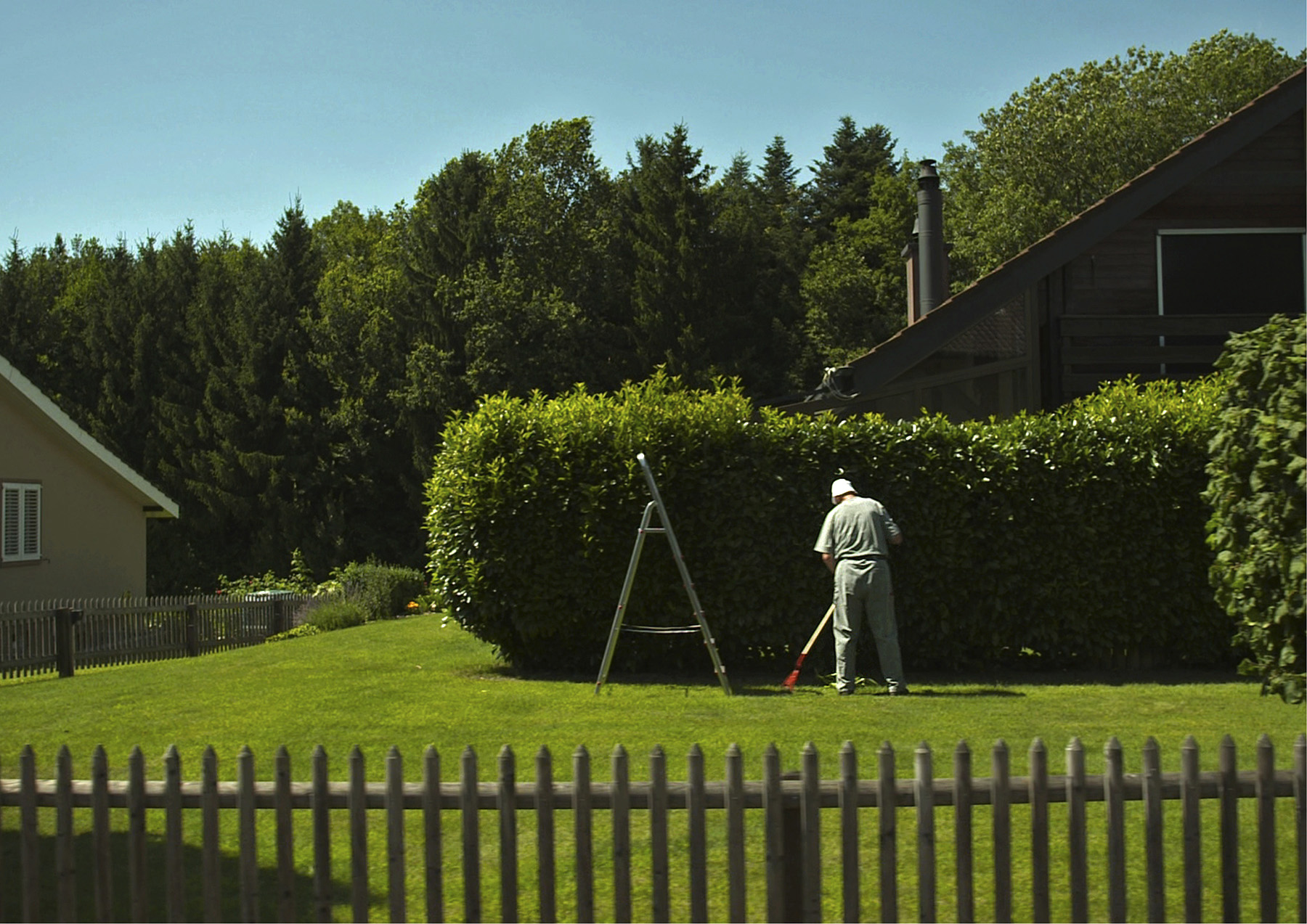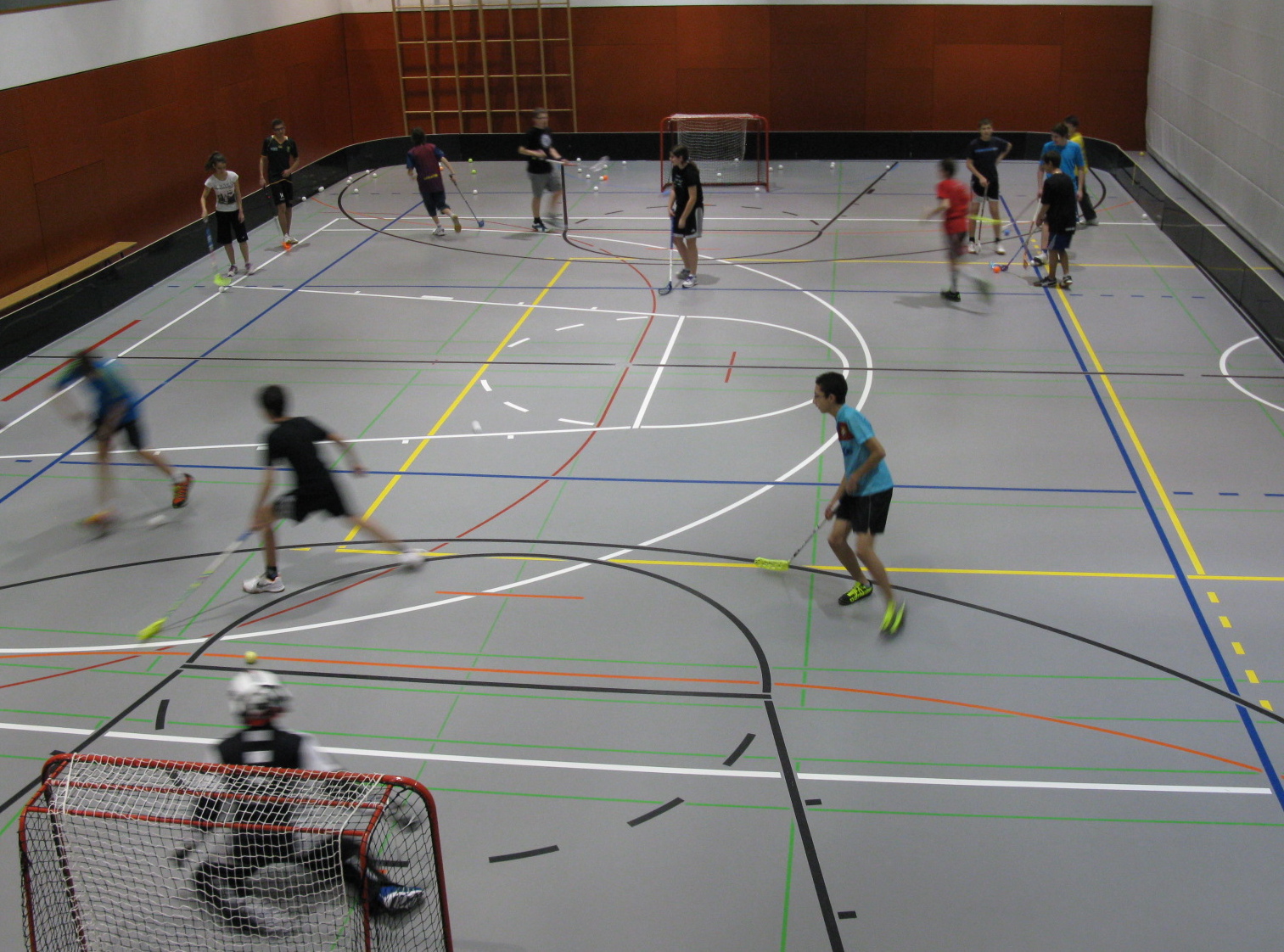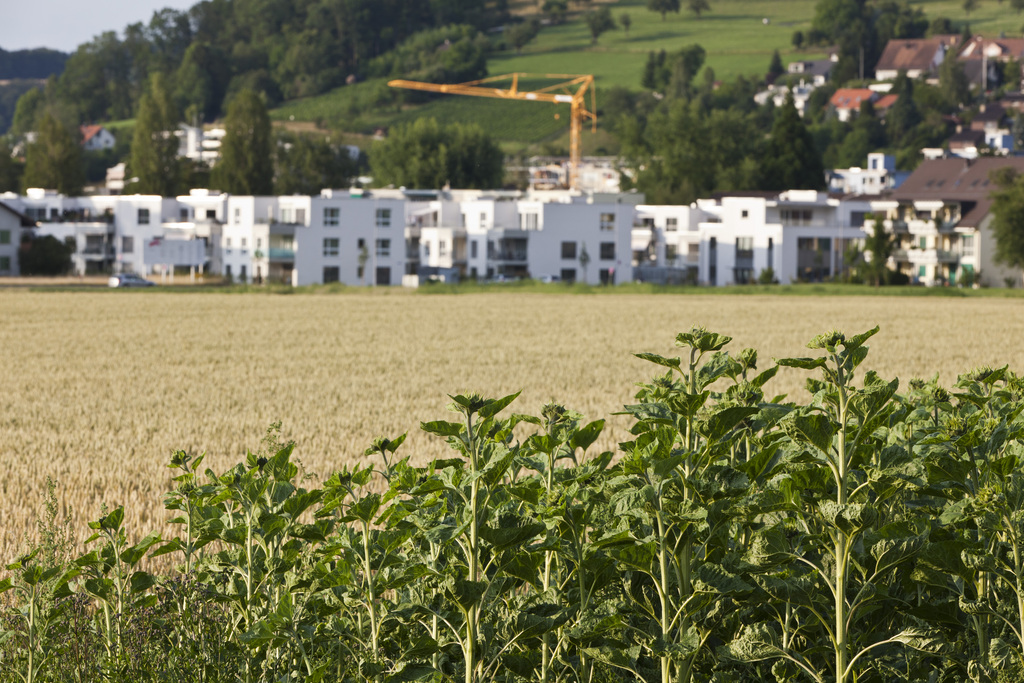Giving dead commuter towns the kiss of life

Once seen as vibrant and tight-knit, today many old farming communities-turned-commuter villages in Switzerland are struggling to keep their social fabric together. But change can often come down to one person.
There was a time when old farmhouses with a wooden bench out in the front dotted the landscape in Suberg, a village west of the capital Bern. In the evenings, tired farmers would retreat to their bench and neighbours would drop in for a chat.
But those days are long gone. Most of the farms have now been replaced by modern villas sheltered from view by tall hedges, and slow country roads have given way to high-speed train tracks and motorways.
“You don’t see anyone sitting facing the street anymore,” says Kathrin Gschwend, a resident of Suberg. “Now we have our garden in the back.”
To accommodate residents who work in the city but want a quiet place to call home, Suberg and many other Swiss villages like it have been transformed in recent decades into Schlafdörfer: so-called ‘dormitory villages’, with spacious homes but virtually no sense of community.
In Suberg – population 612 – the local shop, post office, marching band and farmers’ cooperative are all a thing of the past. Inhabitants now buy their groceries in the next town over, hold jobs in nearby cities and rarely socialise with their neighbours.
“It can be pretty lonely at night,” says Simon Baumann, who was born in Suberg and moved back to his hometown with his partner Gschwend a few years ago.
Struck by the isolation they felt, the young couple recently filmed a documentary about their village’s transformation – and were surprised by the reaction they got.
Film-maker Simon Baumann, who was born and grew up in Suberg, wrote the documentary Zum Biespiel Suberg with his partner, Kathrin Gscwhend. By turns funny and touching, the film charts Baumann’s attempt to integrate into the village after moving into his family’s old farmhouse.
Baumann joins the men’s choir and goes knocking on neighbours’ doors in an attempt to meet the locals. Grainy scenes from old Super 8mm home movies shot by his uncle show life in Suberg at the time of his grandfather, a hardworking farmer whose death in the late 1970s marked the last funeral procession in the village – and the end of an era.
Zum Biespiel Suberg premiered at the 2013 Visions du Réel film festival in Nyon, where it won a prize. Baumann also picked up the director’s trophy at the canton Bern film awards last October.
The film played in cinemas across German-speaking Switzerland this winter and is out on DVD in spring.
Film strikes a chord
As Zum Beispiel Suberg played in cinemas across German-speaking Switzerland over the winter, Baumann and Gschwend heard from hundreds of movie-goers who said their villages had suffered similar fates and were not happy about it.
“We received letters everyday,” says Baumann. “It’s like Suberg is everywhere.”
The film shows Baumann, whose childhood friends have left Suberg for Zurich or Berlin, joining the men’s choir – about the only club still running in the village – in an attempt to meet other locals. But the choir, made up mainly of retirees, is facing a crisis: with the exception of Baumann, it’s unable to attract new members.
This doesn’t surprise Martin Schuler, a professor in urban and regional planning at the Federal Institute of Technology in Lausanne (EPFL). Schuler says that local clubs and traditional associations which once brought villagers together now depend largely on older residents.
Many other clubs have disappeared for lack of interest: young people have moved to the cities, while those who have chosen to call places like Suberg home have other priorities.
“The newcomers are there because they have an apartment there,” Schuler says. “For some of them, local life is not a point of attraction.”
What new inhabitants are looking for is convenience. Villages that lie within proximity of large urban centres allow families to occupy large homes for a reasonable price and still have a relatively short commute to work in the city. For Suberg residents, both Bern and the town of Biel are just a 20-minute train ride away.
Yet even as villages have gained new residents, Schuler says that in the last decade or so, small-scale services, such as the local post office or schoolhouse, have gradually closed in favour of larger structures that serve an entire region. According to Schuler, this has likely added to the loss of a sense of community.
Making it work
Just like in Suberg, farmhouses in the canton Fribourg village of Avry disappeared a few decades ago to make way for family homes whose occupants hold jobs mainly outside the commune. But local resident Marc Antoine Messer, a researcher in spatial planning at the EPFL, points to a key difference.
“The clubs and associations here are very active,” says the PhD student, whose village counts roughly 1,800 inhabitants.
Indeed the village boasts a number of clubs, from a cycling group to a choir. The floorball indoor hockey club alone, started just nine years ago, has some 200 active members.

On a recent Monday night, club president Michel Müller watched as a group of local teenagers warmed up for their twice-weekly floorball practice inside a modern gym at the local high school.
“We used to have a post office, a train station, even a postman who had time to stop and talk to us,” said Müller, who has lived in the village for 15 years. “We’re lucky because we do have a shopping centre, but it’s not the same thing.”
Müller, who grew up in canton Valais and works in Bern, started the sports club with two teams of young players. Since then, it has grown to include all age groups, children as well as adults. He credits the club for helping him and his family to integrate in a place that he admits has become a commuter village.
“I’ve gotten to know many people in the village,” said Müller who, like many other residents, chose to settle in Avry because of its location – conveniently off the motorway and a short ride from Bern.
There is no village centre or local restaurant, so the floorball club serves as a much-needed meeting point.
“The parents travel together to tournaments,” he explained. “It gives them a different setting other than their children’s school to meet each other.”
Small communes lying within proximity of large urban centres have been attracting new inhabitants since at least the 1970s, when the family car and better transport infrastructure allowed those who wanted safer and larger living spaces to leave the cities, but still have a relatively short commute to work.
“This was a strong period for construction of small houses [outside the city] by the middle class,” explains Martin Schuler, a professor at EPFL.
As villas and modern roads have been constructed, agricultural land has disappeared – authorities say at a rate of nearly 1 m2 per second. For example, in its heyday, Suberg had 14 farms. Today there are just two.
While this change is not unique to Switzerland, researcher Marc Antoine Messer says it has happened a couple of decades later than in other industrialised countries, such as the United States. With the exodus of middle-class families to the countryside, cities lost a significant portion of their population. However, for the first time since the 1960s, Swiss cities are now beginning to gain new inhabitants.
Still, according to numbers from the Federal Statistical Office and the Federal Office for Spatial Development, in 2005 some 63% of Swiss workers held a job outside their commune of residence.
(Source: Federal Statistical Office and the Federal Office for Spatial Development)
Local identity
Messer suggests that retaining a sense of community may boil down to the willingness of even a single resident to set up and run activities in the village. But the general trend has been an overall decrease in people’s commitment.
“We have moved from playing an active role to playing the role of customer,” Messer says, adding that people are more inclined to join existing clubs, even if they have to drive out of the village to find them, than to create new ones.
“People no longer identify with their village,” echoes Gschwend, who notes that Suberg has no cultural attractions to offer its residents. “And if you don’t identify with your village, you won’t get involved.”
She is convinced personal initiative can make a difference. One letter she and Baumann received from a movie-goer in the nearby village of Ziegelried explained how residents themselves organise a party four times a year and catch up over drinks.
To shake up his hometown, Baumann has similar ideas in mind. The commune has invited him to join the council’s culture and sports committee, and Baumann plans to work with them to devise activities like an open-air cinema to bring locals together. His film has got fellow residents thinking too, so he’s optimistic that things in Suberg are about to change for the better.
After all, says his partner Gschwend, “It’s not nice to live in dead places”.

In compliance with the JTI standards
More: SWI swissinfo.ch certified by the Journalism Trust Initiative


You can find an overview of ongoing debates with our journalists here. Please join us!
If you want to start a conversation about a topic raised in this article or want to report factual errors, email us at english@swissinfo.ch.